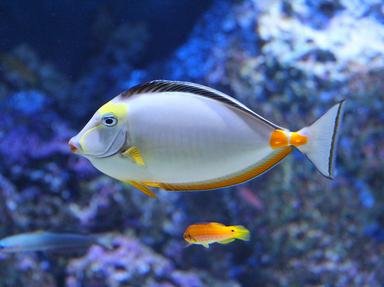Quiz Answer Key and Fun Facts
1. What is another name for the king salmon?
2. The king salmon is an anadromous fish. What does that mean?
3. On the average, how long does a king salmon stay in the ocean before making the trip back to home rivers to spawn?
4. As the male king salmon makes its way to spawn, its physical appearance noticeably changes. What grows longer?
5. It is easy to tell the difference between a male and female king salmon getting ready to spawn just by looking at their appearance. Which of the following changes?
6. What is the name of the nest where a female king salmon lays her eggs?
7. What does a female salmon do immediately after her eggs are laid?
8. After the king salmon egg hatches, the fish is called an alevin. It remains at that stage until it can eat on its own and is called a fry. What is the next stage of the life cycle, during which time stripes are grown for reasons of camouflage?
9. How does the diet of a king salmon change as it begins its migration to spawn?
10. Many king salmon go back to the river where they were born to spawn.
Source: Author
ponycargirl
This quiz was reviewed by FunTrivia editor
rossian before going online.
Any errors found in FunTrivia content are routinely corrected through our feedback system.
